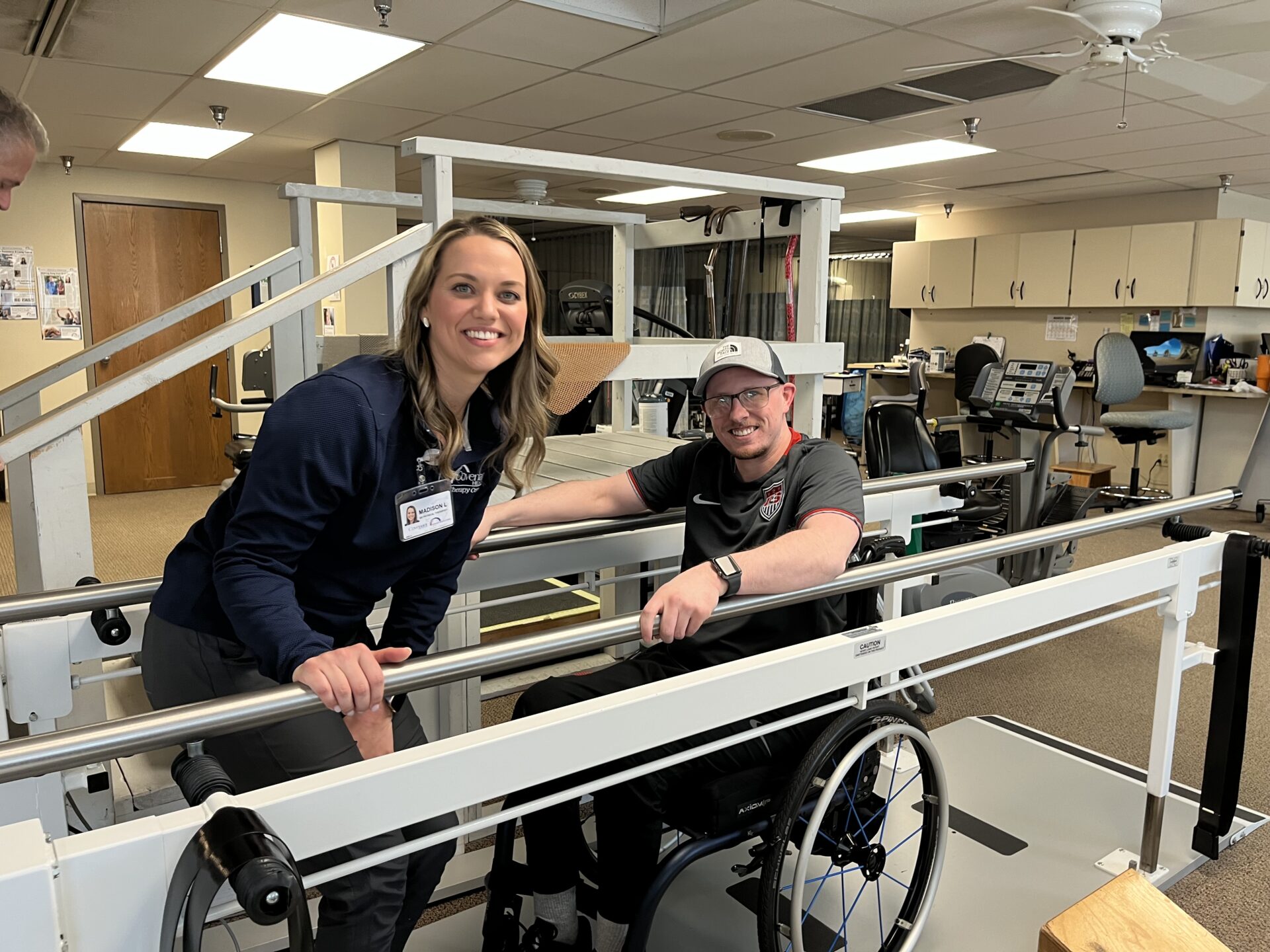- Find a DoctorDoctors by Specialty
- Cardiac Electrophysiology
- Cardiology
- Colon & Rectal Surgery
- Family Medicine
- Gastroenterology
- General & Vascular Surgery
- Gynecological Oncology
- Gynecology
- Infectious Disease
- Internal Medicine
- Interventional Cardiology
- Interventional Radiology
- Nephrology
- Neurology
- Neurosurgery
- Obstetrics & Gynecology
- Oncology
- Oncology & Hematology
- Orthopedic Surgery
- Otolaryngology
- Perinatology
- Psychiatry
- Pulmonary Medicine
- Radiation Oncology
- Rheumatology
- Sleep Medicine
- Thoracic Surgery
- Urology
- View All Doctors
- Our ServicesMedical Services
- Bariatric Services
- Behavioral & Mental Health
- Breast Care
- Cancer Care
- Critical Care
- Ear, Nose, & Throat
- Emergency Services
- Gastroenterology
- Glossary
- Heart Care
- Home Care
- Hospice & Palliative Care
- Imaging & Diagnostics
- Long-Term Care
- Nephrology
- Orthopedics
- Primary Care
- Rehabilitation Therapies
- Robotic-Assisted Surgery
- Sleep Services
- Spine Care
- Stroke Care
- Surgery Services
- Telehealth Services
- Urology
- Urgent Care
- Virtual Urgent Care
- Women’s Services
- Wound Care
- Our Locations
- Patients & Visitors
- About Us
“Flu cases across Covenant Health are up significantly compared to the same time period last year, ” says Dr Mark Browne, MD, senior vice president and chief medical officer for Covenant Health. “Most facilities are seeing two to three times as many confirmed flu cases as they were at this time in 2017.”
 Sick days are no vacation. Because the flu virus spreads from person to person, it is possible to catch the virus at work. But there are things you can do to protect yourself at the office. And if you think you might be sick, there are things you can do to prevent coworkers from getting sick, too.
Sick days are no vacation. Because the flu virus spreads from person to person, it is possible to catch the virus at work. But there are things you can do to protect yourself at the office. And if you think you might be sick, there are things you can do to prevent coworkers from getting sick, too.
Viruses that infect the nose, throat, and lungs cause illnesses like the flu and colds. They are usually spread from person to person when an infected person coughs, sneezes, or talks.
They also can spread when you touch cold or flu viruses deposited from another person on a desktop, doorknob, desk, telephone receiver, or handrail. Some viruses and bacteria can live for 2 hours or more on hard surfaces. If you then touch your eyes, mouth, or nose before washing your hands, the viruses or bacteria enter your body and infection can occur.
Flu prevention
The most important way to prevent the flu is to get a flu vaccine every year. The timing of flu season is unpredictable and can vary from season to season. But it generally runs from October to May. It takes about 2 weeks after you get the vaccine for your body to form antibodies to protect you.
The following people should not get the flu shot without getting approval from their healthcare provider:
-
Those with severe allergy to chicken eggs
-
Those who have had a severe reaction to the flu vaccine in the past
-
Those who developed Guillain-Barré syndrome within 6 weeks of a previous flu vaccine
-
Those with a moderate to severe illness that includes a fever. These people should wait until they have recovered from their illness.
Protect yourself
Here are tips to stay healthy:
-
Wash your hands often with soap and warm water for 20 seconds. Keep an alcohol-based hand sanitizer on your desk or with you at all times. After coughing, sneezing, or blowing your nose, wash your hands or rub sanitizer into them until they are dry. Clean your hands after using public transportation or conference room equipment.
-
When soap and water aren’t available, use alcohol-based throwaway hand wipes or gel sanitizers. Those that work contain at least 60% alcohol. If using a gel, rub it into your hands until they are dry.
-
Don’t touch your eyes, nose, or mouth with your hands.
-
Keep your work surface clean. Use a household disinfectant to wipe down your desk, keyboard, mouse, telephone, and other objects you touch often. Follow the directions on the label.
-
If possible, don’t use coworkers’ offices, desks, or supplies. If you must use them, wipe them down with disinfectant first.
-
Get the flu vaccine as soon as it is available in your area.
Protect others
Some ways to protect those around you include:
-
Keep tissues on your desk, and cough or sneeze into a tissue.
-
Stay at home if you feel sick with flu-like symptoms like a fever or chills and a cough or sore throat. Other symptoms include runny nose, headache, fatigue, diarrhea, and vomiting. Contact your healthcare provider to find out whether you should be tested or treated for the flu.
-
Stay at home until at least 24 hours after you no longer have a temperature of 100.4°F (38°C) or higher without the use of fever-reducing medicine. Some symptoms may remain.
-
If you have a family member who has the flu but you feel well, it is safe to go to work. Check your health daily and stay home if you start to feel sick.
“Although our Covenant Health facilities are busy,” says Dr. Browne, “we continue to see patients and provide care at all of our hospitals. We can all help minimize the spread of flu by practicing good handwashing and by not visiting those who are sick at home or in the hospital if you have respiratory symptoms or fever.”
























